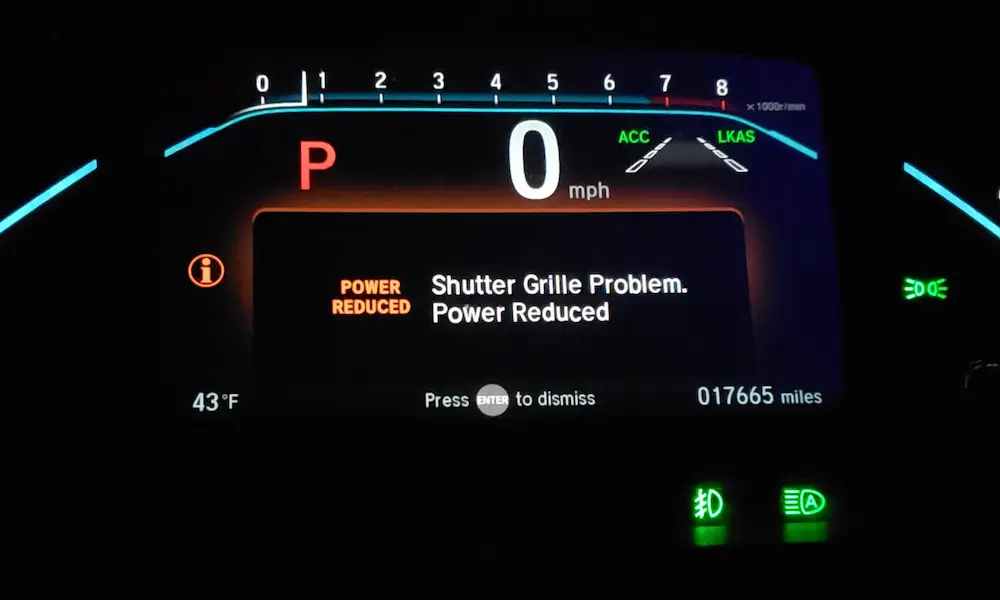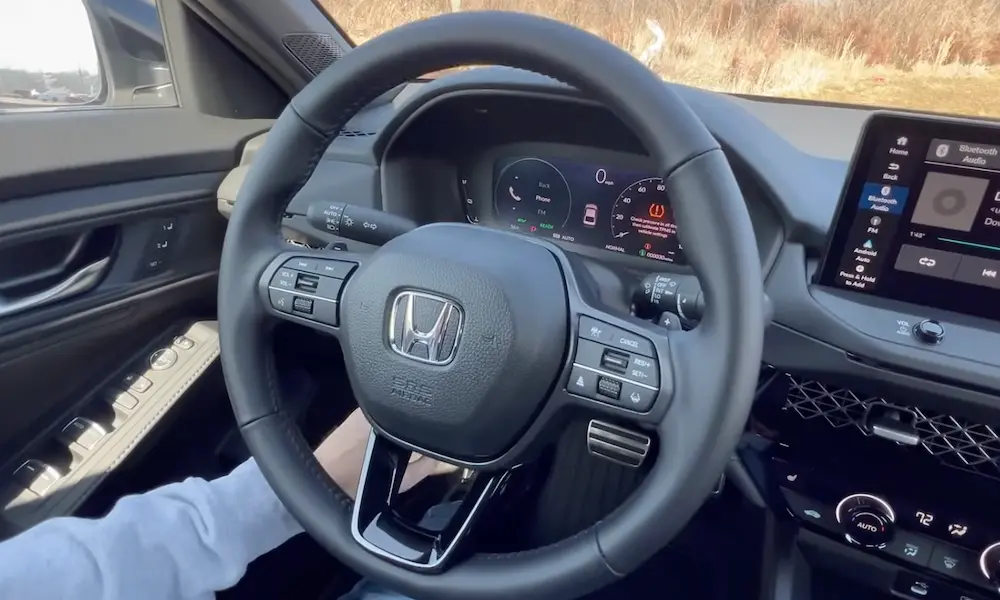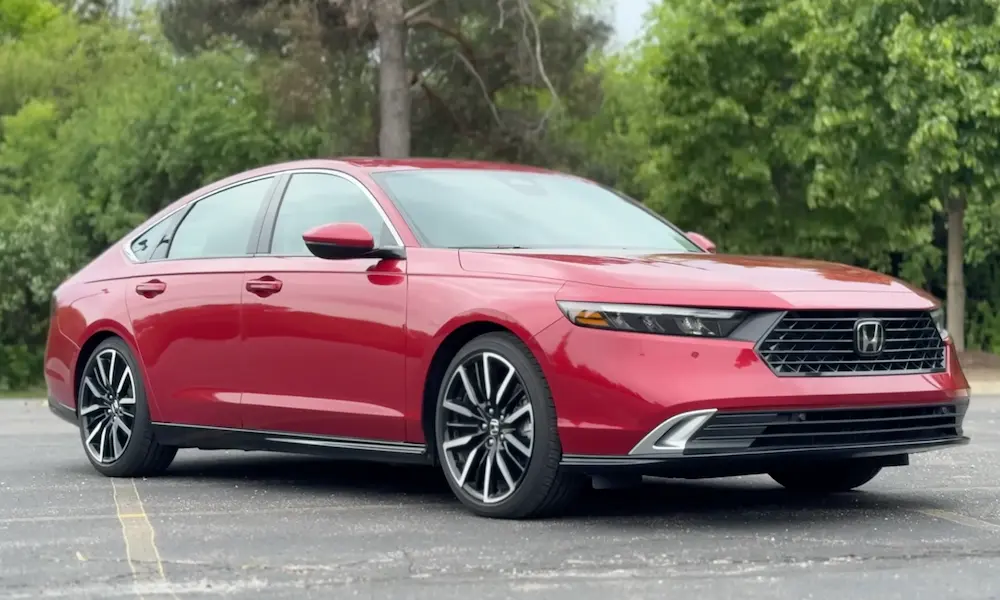You’re cruising down the highway when that pesky tire pressure light pops up on your Honda Accord’s dashboard. Don’t worry—it’s a common issue that’s usually simple to fix. Once you’ve added air to your tires, you’ll need to reset that warning light. This guide walks you through the exact steps to reset your tire pressure light on any Honda Accord model.
Why Your Honda Accord’s Tire Pressure Light Is On
Your Honda Accord uses a Tire Pressure Monitoring System (TPMS) that keeps an eye on your tire pressure while you drive. When the system detects that one or more tires are significantly underinflated, it turns on that warning light.
Honda uses two different TPMS technologies depending on your Accord’s model year:
- Newer models: These compare the rolling radius of each tire to spot when one is underinflated
- 2013-2016 models: These don’t have traditional pressure sensors in the wheels but instead use the ABS wheel speed sensors to detect when a tire’s rolling radius changes due to low pressure
You’ll need to reset (or recalibrate) the system whenever you:
- Add air to an underinflated tire
- Replace a tire
- Rotate your tires
- Make any tire pressure adjustments
Check Your Tire Pressure Before Resetting
Before resetting anything, make sure your tires actually have the correct pressure. Here’s what to do:
- Find your Honda Accord’s recommended tire pressure (typically listed on a sticker inside the driver’s door jamb)
- Use a quality tire pressure gauge to check each tire when cold
- Add air as needed to reach the recommended PSI
- Don’t forget to check your spare tire too
Once all tires are properly inflated, you’re ready to reset the tire pressure light.
How to Reset Tire Pressure Light on 2023-2025 Honda Accord (Touchscreen Models)
The newest Accord models use a touchscreen-based reset process:
- Park your car and turn the ignition on (or put it in accessory mode)
- Touch the Home icon on your touchscreen display
- Select “Vehicle Settings” (or tap “Settings” and then “Vehicle”)
- Select “TPMS Calibration”
- Select “Calibrate”
The calibration will begin immediately. You’ll need to drive about 30 minutes at speeds between 30-60 mph for the system to complete the recalibration.
How to Reset Tire Pressure Light on Honda Accord with Steering Wheel Controls
If your Accord has steering wheel buttons but no touchscreen:
- Use the steering wheel buttons to navigate to the Home screen on your driver information interface
- Select “Settings”
- Select “TPMS Calibration”
- Select “Calibrate”
The TPMS light should start blinking, indicating the calibration process has begun.
Resetting TPMS on 2013-2016 Honda Accord Models
The 2013-2016 Accords typically have a dedicated TPMS button:
- Look for the TPMS button (usually located to the left of the steering wheel, below the dashboard)
- Press and hold this button for about 3 seconds
- Release when the TPMS indicator light blinks twice
- The system will now begin recalibrating as you drive
Many owners confirm this method works well: “Just hold that TPMS button for a couple of seconds until it flashes, and then it goes away after you start driving.”
Resetting Tire Pressure Light on Older Honda Accord Models
For older Accord models with steering wheel buttons:
- Press the MENU button on your steering wheel
- Select “Customize Settings” using the steering wheel controls
- Navigate to “TPMS Calibration”
- Select “Initialize”
- Select “Yes” to confirm
- Press MENU again to exit the settings
What to Do If the Reset Doesn’t Work
If you’ve followed these steps and the tire pressure light stays on:
- Double-check your tire pressure: Even a small difference of 1-2 PSI can trigger the light
- Drive for 30+ minutes: The calibration needs time at speeds between at steady speeds
- Try the reset procedure again: Sometimes it takes a second attempt
- Check for sensor issues: If the light flashes rather than stays solid, there might be a problem with the TPMS system itself
Understanding the Calibration Process
Here’s what happens when you start the calibration:
- The system begins recording data as soon as you select “Calibrate”
- You must drive approximately 30 minutes at speeds between 30-60 mph
- The driving doesn’t need to be continuous—it’s cumulative time
- The system will automatically finish calibrating when enough data is collected
- The TPMS light should turn off once calibration is complete
If you see a “Calibration Failed to Start” message, simply repeat the calibration steps.
TPMS Reset Quick Reference Table
| Honda Accord Model Years | Reset Method | Button/Menu Location |
|---|---|---|
| 2023-2025 | Touchscreen | Home > Vehicle Settings > TPMS Calibration > Calibrate |
| 2017-2022 | Steering Wheel Controls | Home > Settings > TPMS Calibration > Calibrate |
| 2013-2016 | TPMS Button | Press and hold dedicated TPMS button for 3 seconds |
| 2008-2012 | Menu System | MENU > Customize Settings > TPMS Calibration > Initialize > Yes |
Why Proper Tire Pressure Matters for Your Honda Accord
Maintaining the correct tire pressure in your Honda Accord isn’t just about keeping that warning light off. It affects:
- Safety: Properly inflated tires provide better handling and reduced stopping distances
- Fuel economy: Underinflated tires can reduce fuel efficiency by up to 3%
- Tire life: Incorrect tire pressure causes uneven wear, shortening tire lifespan
- Comfort: Properly inflated tires provide a smoother ride
- Prevention: Severely underinflated tires are at risk of blowouts and failures
According to the National Highway Traffic Safety Administration, keeping your tires properly inflated is one of the most important maintenance tasks you can perform.
How Often to Check Your Honda Accord’s Tire Pressure
Honda recommends checking your tire pressure at least once a month with a quality gauge. The TPMS system is designed as a backup safety feature, not a replacement for regular tire maintenance.
The best time to check pressure is when tires are “cold”—meaning when the car hasn’t been driven for at least three hours. This gives you the most accurate reading.
Signs Your TPMS System Might Need Professional Attention
While most TPMS issues can be resolved with a simple reset, some situations warrant a trip to your Honda dealer or a tire professional:
- TPMS light flashes for 60-90 seconds when starting the car before staying solid
- Light comes back on immediately after reset and proper inflation
- Persistent “TPMS System Failure” messages on your dashboard
- TPMS light comes on after replacing batteries or jumpstarting your car
Seasonal Considerations for Honda Accord Tire Pressure
Temperature changes affect tire pressure—for every 10°F change in temperature, your tire pressure will change by about 1 PSI. This means:
- In winter: Pressure decreases as temperatures drop
- In summer: Pressure increases as temperatures rise
If you live in an area with dramatic seasonal temperature swings, you might need to adjust your tire pressure and reset your TPMS system when seasons change.
Tips to Prevent Frequent TPMS Light Issues
To minimize how often you deal with your Honda Accord’s tire pressure light:
- Check pressure monthly: Make it a habit on a specific day
- Use a quality gauge: Don’t rely on gas station air machines for accurate pressure readings
- Remember seasonal adjustments: Check pressure more frequently during rapid temperature changes
- Inspect for slow leaks: Look for nails or other punctures if one tire loses pressure regularly
- Write down readings: Keep a small log to spot trends in pressure loss
The Evolution of Honda’s TPMS Technology
Honda has continuously improved their TPMS systems over the years:
- Early systems (pre-2013): Used direct sensors inside each tire that measured actual pressure
- 2013-2016: Switched to an indirect system using wheel speed sensors
- 2017-present: Improved indirect systems with enhanced algorithms and user interfaces
- Newest models: Integration with digital displays and smartphone apps for easier monitoring
This evolution explains why different model years have different reset procedures.
The Bottom Line on Resetting Your Honda Accord’s Tire Pressure Light
Resetting the tire pressure light on your Honda Accord is a straightforward process that varies slightly depending on your model year. After ensuring your tires are properly inflated, follow the appropriate reset method for your Accord. Remember that the system needs time and driving to complete the calibration, so be patient.
Regular tire maintenance—including proper inflation—is one of the simplest yet most important things you can do to keep your Honda Accord safe, efficient, and performing at its best.














